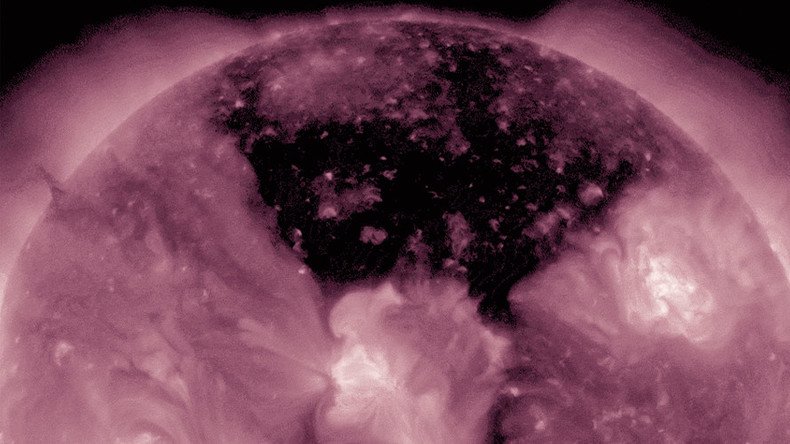Coronal hole paints sun black in stunning NASA video

Images of the sun usually show a burning ball of fire, shining bright in the sky. However, NASA has just released a stunning picture which captured the exact opposite – a giant dark area on the sun's upper half.
The image, snapped by NASA's Solar Dynamics Observatory (SDO) from May 17-19, shows what is known as a “coronal hole” on the sun, described by the space agency as a “low-density region of the sun's atmosphere, known as the cornea.”
Corneal holes are visible in certain types of extreme ultraviolet light, which is invisible to the human eye. NASA has colorized the picture in purple, for easy viewing.
According to the space agency, such holes are considered highly important in understanding the space environment around Earth, through which astronauts and technology travel.
“Coronal holes are the source of a high-speed wind of solar particles that streams off the sun some three times faster than slower wind elsewhere,” NASA said in a statement.
While the cause of coronal holes remains a mystery, they “correlate to areas on the sun where magnetic fields soar up and away, without looping back down to the surface, as they do elsewhere.”
NASA's SDO is aimed at helping astronomers understand the sun's influence on Earth and the space around it, by “studying the solar atmosphere on small scales of space and time and in many wavelengths simultaneously.”
The SDO has been pointing its lens at the sun for the past six years. In February, a breathtaking timelapse of SDO images was released, showcasing the changes experienced by the sun each year.












